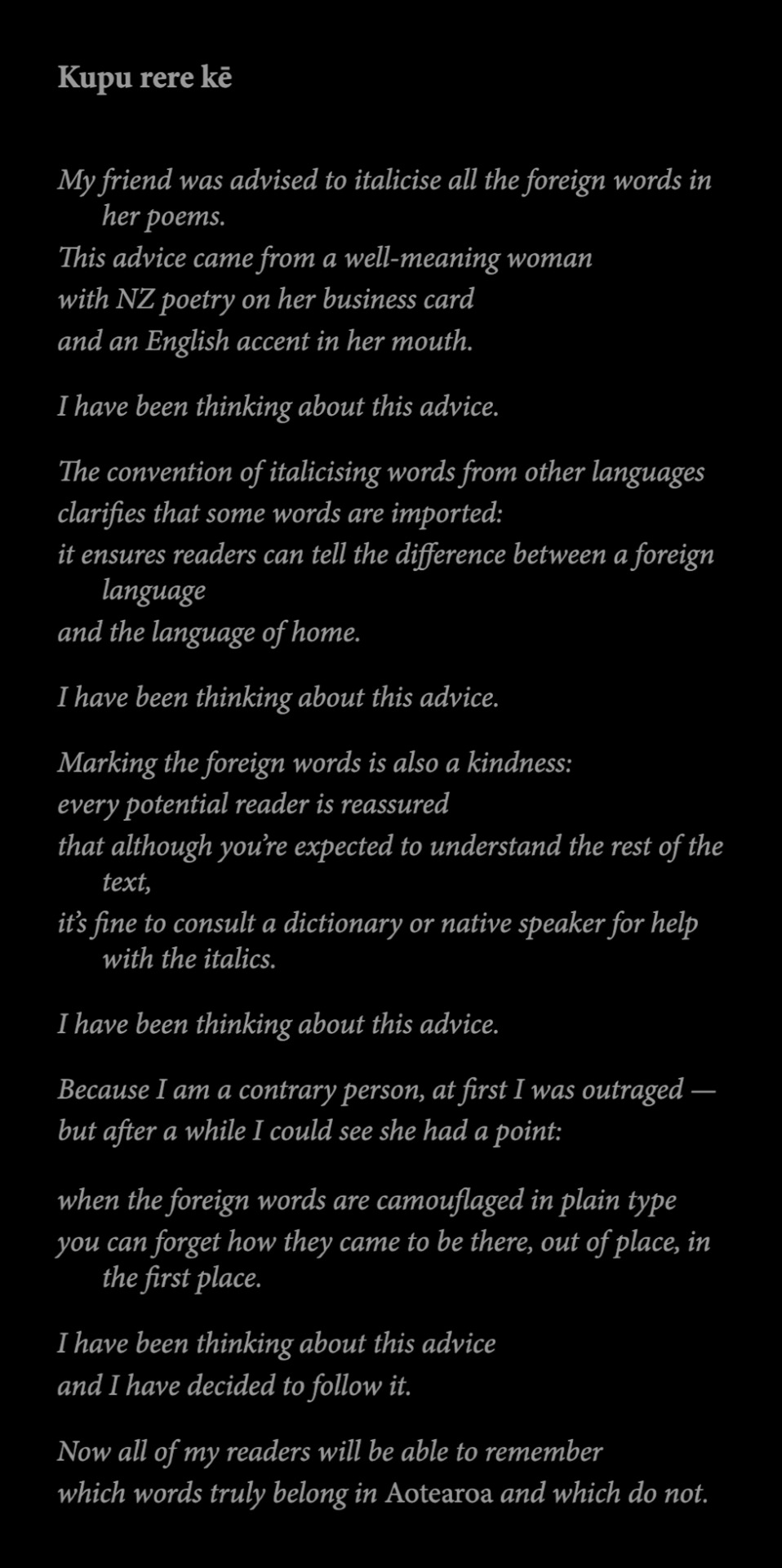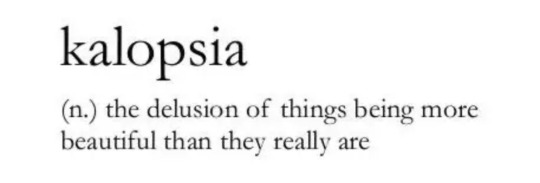#how to write poetry
Explore tagged Tumblr posts
Text
rule 1: begin with a thought (as if it’s some kind of law)
rule 2: merge all of the ‘you’-s (as if only one did the hurt)
rule 3: make sure it’s short (as if you’ve said all you came here to say)
rule 4: don’t say who it’s for (hope that will tempt them to stay)
#rules for writing#rules for writing poetry#on poetry#spilled poetry#writing#writerscreed#poetic stories#twcpoetry#poetry#poets on tumblr#on self reflection#how to write#how to write poetry
72 notes
·
View notes
Text
Hellos peoples, recently posted my first long-as-hell comprehensive guide on how to write a contrapuntal poem, but since it's my first blog, I'll give a discount by posting parts of the guide here, but check out my substack if you'd love to!

How to start your first contrapuntal poem:
1. Find a central theme of duality
In my humble opinion, the backbone of a truly fascinating contrapuntal/twin cinema is a compelling binary that can be juxtaposed with two separate columns. Ask yourself this: what kind of theme encapsulates the isolation while also revealing the subtle parallels of unity and oneness? Almost anything, from life and death, love and heartbreak, to conflicting identities and feelings.
The poem could also be a conversation between two people in opposite settings. That’s why the possibilities of binaries are endless and the concept is your oyster to explore! Even if you’re overwhelmed by the many ideas, you can start with a simple topic or a theme you like, and think in contrasting perspectives to start the ball rolling!
2. Start with the easier column first
Once you have settled on the theme, decide on what the right and left column would be, whether it’s one side of a certain conversation, or the past to the present/future, etc. Most people start with the first and left column to write completely before writing the second right column, as it’s more natural to determine the left side first and develop the right accordingly. However, if you feel the fixed perspective on the right is easier to pinpoint, by all means!
3. Leave gaps to add or change lines
Writing contrapuntal poems is multitasking in ensuring the lines of each column makes sense while also able to flow continuously across. That’s why adding, deleting, changing lines or just repositioning them will be done regularly. Don’t worry if it doesn’t stick to the landing, since not every bottle flip will land perfectly sometimes. Give yourself room when writing or typing the poem out to change the arrangements when needed! (Though it is a lot easier to type contrapuntal than writing on paper–)
4. Check if the second column flows well itself
While it is tempting to try and see the magic by reading across both columns, it would be advisable to check if the second column could stand on its own first, so as to do necessary tweaking first and ensure the second column is sound before bridging both columns. Also, as contrapuntal poems can sometimes be written through the flow of intuition and may not be what you initially planned for, write anyway and see where it goes, as long as each column makes sense by itself first.
5. See if it flows nicely together across
This could be difficult when it comes to your first few attempts, so a tip could be ensuring the poems are written in a table with just two columns and putting the first column to right align and the second column to the left align. That way it will be easier to read the lines across, but even if you wish to format the poem differently, you can do so after editing to ensure you have an easier time reading the lines across first. If you wish for a slight cheat code, each line per column could be something in a phrase that could stand by itself, thus making it easier to link to the next line of column without enjambment sometimes.
6. Punctuation and especially semicolons are useful (from @two-bees-poetry )
Punctuations are usually the toughest things in contrapuntal, but commas are often better than full stops, and semicolons are especially useful at the end of a line going to a next column due to it’s versatility. In my opinion, you could use the colon and the dashes as well as an alternative when suitable. Opting for no punctuation throughout or sparse use of it is also okay!
7. Formatting on google docs is also quite easy
Once the two columns are on the table, to make it more clean without the black border lines, you can highlight the whole table and go to format > table > table properties > colour on the computer, and choose either to make the colour of the borders go from black to white, or to press the length to go from 1pt to 0pt. Volia!
8. Or… try to write two columns simultaneously–
Writing one column at a time is one way, but writing both at the same time, like inching down one column by a few lines and then continuing another is the daredevil method that I use. This method is for those who may be a bit impatient or find themselves not truly knowing what exactly to write despite planning, so might as well inch a bit down both columns to achieve the unifying poetic voice while not minding to stop sometimes (or more often) to ensure each column, as it’s developing, also makes sense by itself.
Somehow my intuition just gets a hold on me and I can’t stay in one lane often, so that happens to me when writing these poems. It’s basically conjuring magic by splatting some awesome ideas like spaghetti on the wall and watching how the lines just miraculously slide into place.
But anyway, these are the basics on how to start! These aren’t set rules since everyone has their own unique methods and styles. However, if you would also like some more tips on how to spice up your contrapuntal poems with originality and depth, here are some awesome ideas:
1. Read other people’s incredible poems
If you like a good output, start with good input, and lots of people have written cool contrapuntal poems. You could even google ‘Singaporean twin cinema’ and find some more mind-blowing attempts. Once you are inspired by their works, you would have a better grasp at how others do their style of contrapuntal and subconsciously learn from them.
2. Plan an outline of rough ideas you want to delve deeper in before starting on the poem
Dump some ideas like banger lines or deep ideas you want to try exploring before getting into the poem proper, so as to get your mind more focused on the lines you may want to consider inserting or making it better.
3. Don’t be afraid to write longer than you expect
Sometimes your muse would feel it has to be longer and you may find yourself going on and on and that’s okay! Follow where your muse wants to lead you and you will be greatly rewarded when you feel a poem is long enough for you to stop or when you need to shorten after some editing, hehe–
4. Spice it up with literary devices
If you or your muse are up for it, unique and thought-provoking metaphors or even symbolism throughout the column or both would work spectacularly. You can also utilise cool concepts like personifications for a nice twist when your poem calls for it.
In my opinion, alliteration is the simplest way to spice up your poetry, especially when you can use different kinds of alliteration to present different sound effects. (But that's another article maybe, you can google sibilance or fricative alliteration to find out more!) You can also go wild with unconventional phrases of alliteration, such as using an apt concept as an adjective that gives a unique spin to the alliteration, such as ‘Lilithian lavenders’ (from one of my poems), or any other one-of-a-kind phrase that's yours to create!
Anaphora between successive lines are also cool. But if you wish to create a greater sense of rhythm in the poem, you can opt for internal rhymes, by choosing certain words that rhyme to give a greater oomph to the work when you read it. Assonance and consonance are also the next best things to cohesively bring the harmony of the poem much more closely.
5. Go hog wild with different variations and forms and styles
Haikus are easy to write, but what if you could do a contrapuntal haiku instead to up the challenge? Believe me when I say I tried and succeeded in doing a contrapuntal villanelle. But you can take any poem form, from limericks to triolets to sonnets or cinquains etc.
If you also want to explore the writing styles of other poets and writers with notable and recognisable poetic voices, like Sylvia Plath or Ocean Vuong, you can take inspiration from their recurring use of phrases and spin in language and certain symbolisms they use often, such as Plath’s sardonic tone in poetry or Ocean Vuong’s way with words like ‘say __’ or ‘tell me__’. As long as you don’t chug it through a language model or blindly follow the unsavoury aspects of the poet’s writing (like racist outdated language etc), you should be good to go, and using contrapuntal poetry to freely explore the different dimensions you can go with an iconic poet’s style is certainly something to add bursting flavour in your writing!
If you’re even more of a daredevil and learn Shakespearean plays, no one said anything about Shakespearean English styles in contrapuntal poems are off the limits, so go for it and satisfy that competitive muse of yours!
And booyah, a banger of a contrapuntal poem with a rich texture of interconnectedness, and a feast for a literary student’s eyes and mind. But overall, what matters most is that you go with the flow of naturally developing your own writing style and voice in contrapuntal poems and having the most fun out of it, and stretch your muse to new heights with this poetry form.
....... And yeah, you reached the end of my long blog and that was the last 80% of my blog so-
#sillysoliloquyshits substack#sillysoliloquyshits blog#blog#how to#how to write#how to write poetry#how to contrapuntal poetry#contrapuntal poem#long post#long reads#substack
4 notes
·
View notes
Text
10 Poem Writing Prompts
Have you ever been in love?
Do you believe in love?
What's the meaning of love?
What's the definition of art?
Are you a good person?
What does it mean to be a good person?
Is that ("good guy" of a famous book/movie/etc..) really a good person?
If so, how are they a good person.
What's poetry?
Is poetry art?
#poetry#ishanispoems#free verse#love#angst#fluff#light angst#haiku#lyrical poetry#limericks#sonnets#how to write poetry#how to write#hope#joy#peace
28 notes
·
View notes
Text
I have exciting news! I’m now teaching on Skillshare and just uploaded my class How to Write Extraordinary Poetry. If you want to learn with me, this link will give you one month free to the entire site. I’ll talk to you on Skillshare!
#how to write#how to write poetry#poetry lessons#poetry class#writing poetry#on writing#poetry community#spoken word poetry#blackout poetry#poem#poets#queer poets on tumblr#queer poetry#indie books#booklr#bookish#skillshare#Skillshare class#nicole mae#poet#poetry#poets on tumblr#writing community#creative writing#class lesson
7 notes
·
View notes
Video
How To Write Poetry~ Original Poem
6 notes
·
View notes
Text
quiz enjoyers! i am now inviting you to come create something in my workshop❕
#new bracken quiz just dropped!!#only took me like three hours actually. kind of impressive#for the way that i write quizzes. i will go 'let me write a piece of short fiction' and then expect to do it in one sitting#I DID IT TONIGHT THOUGH. almost 2000 words in the document. crazy shit#anyway um. what if i told you all that this one is normal for sure. nice normal regular quiz that will be nice to you#i won't pinky promise but you are free to believe me if you want <3#uquiz#my uquizzes#my quizzes#uquiz quiz#uquizzes#uquiz link#quiz link#quizzes#quiz#is there a tag for fucked up narrative/poetry based quizzes. how do i get that to the target audience#^ guy who has been spending this whole time cultivating the target audience
19K notes
·
View notes
Text
How To Write, market And Publish Your Poetry-Even If You're A Beginner
The Ultimate Resource for Poets: Why You Should Own Poet’s Market, 34th Edition
For poets, crafting verses is both a passion and a calling. But in today’s literary landscape, poetry is not just about creation; it’s also about sharing your work with the world, finding the right audience, and even making a living from your art. Enter Poet’s Market, 34th Edition, a comprehensive resource that has been a trusted companion to poets for decades. If you’re serious about your poetry, this book is a must-have. Here’s why:
1. A Treasure Trove of Publishing Opportunities
One of the standout features of Poet’s Market is its exhaustive list of publication outlets. The 34th edition includes updated listings for:
Magazines and Journals: Hundreds of entries detail where you can submit your poetry, including submission guidelines, payment policies, and editorial preferences.
Contests and Awards: Opportunities to gain recognition and monetary rewards through poetry contests are cataloged here, complete with entry requirements and deadlines.
Book Publishers: Thinking about publishing a poetry collection? Poet’s Market lists reputable publishers that are open to poetry submissions.
Self-Publishing Resources: For poets considering self-publishing, the book offers a variety of tools and contacts to help bring your book to life.
These listings save countless hours of online research and ensure you’re targeting the right venues for your work.
2. Expert Advice on Craft and Career Development
The 34th edition is more than just a directory—it’s also a guidebook for building a career in poetry. It features:
Interviews with Established Poets: Gain insights from acclaimed poets on their creative processes, strategies for success, and lessons learned in the industry.
Articles on Craft: Learn how to refine your poetry, from mastering specific forms and techniques to experimenting with modern styles.
Marketing and Promotion Tips: Discover how to create a professional author platform, leverage social media, and effectively promote your poetry collections.
For poets at all levels, this expert advice can be transformative.
3. Networking and Community Building
The poetry world thrives on connections, and Poet’s Market helps you build them:
Writers’ Conferences and Workshops: The book lists opportunities to network with other poets, learn from mentors, and share your work in supportive environments.
Writing Groups and Organizations: Find local and national groups where you can connect with like-minded individuals, receive feedback, and collaborate on projects.
Building these relationships can open doors to new opportunities and foster a sense of belonging in the poetry community.
4. Tools for Financial Success
Many poets struggle with the financial aspects of their craft, but Poet’s Market addresses this head-on:
Tips on Monetizing Your Poetry: Learn how to make money through readings, teaching, licensing, and other creative avenues.
Grants and Fellowships: Explore funding opportunities to support your poetic endeavors.
Clear Submission Guidelines: Avoid costly mistakes by following the precise submission rules outlined for each listing.
By providing these resources, the book empowers poets to pursue their passion without compromising financial stability.
5. A Resource for All Experience Levels
Whether you’re a beginner just dipping your toes into the world of poetry or a seasoned poet looking for fresh opportunities, Poet’s Market caters to your needs:
For Beginners: The book offers guidance on the basics of submitting work, understanding the publishing process, and building confidence in your craft.
For Advanced Poets: Experienced poets will appreciate the comprehensive market listings, advanced promotional strategies, and professional insights.
No matter where you are in your poetic journey, this book grows with you.
6. Time-Tested Credibility
For over three decades, Poet’s Market has been a cornerstone resource for poets. The 34th edition upholds this legacy, providing updated, accurate, and trustworthy information. Its editors and contributors are deeply embedded in the poetry world, ensuring the content is relevant and reliable.
7. Why Invest in Poet’s Market, 34th Edition?
Purchasing Poet’s Market is not just buying a book—it’s investing in your poetic future. Here’s why it’s worth every penny:
Efficiency: Save time and effort with consolidated resources.
Opportunities: Expand your reach with curated submission options.
Education: Gain insights to hone your craft and career strategies.
Inspiration: Discover new paths to share your poetry and connect with audiences.
With its blend of practicality and inspiration, this book is an essential companion for anyone serious about poetry.
Conclusion
In the ever-evolving literary world, poets need tools to navigate their journey effectively. Poet’s Market, 34th Edition is more than a book—it’s a guide, mentor, and gateway to success. By offering a comprehensive list of resources, expert advice, and actionable insights, it equips poets with everything they need to thrive.
So, if you’re ready to take your poetry to the next level, Poet’s Market, 34th Edition is the key to unlocking your potential. Invest in it today and start building the poetic career you’ve always dreamed of.
#poetry#writing poetry#writing#publishing poetry#how to write poetry#markets for poetry#how to publish poetry#poetry contests
0 notes
Text

Alice Te Punga Somerville, Always Italicise: How to Write While Colonised - Kupu rere kē
[ID: A poem titled: Kupu rere kē. [in italics] My friend was advised to italicise all the foreign words in her poems. This advice came from a well-meaning woman with NZ poetry on her business card and an English accent in her mouth. I have been thinking about this advice. The convention of italicising words from other languages clarifies that some words are imported: it ensures readers can tell the difference between a foreign language and the language of home. I have been thinking about this advice. Marking the foreign words is also a kindness: every potential reader is reassured that although you're expected to understand the rest of the text, it's fine to consult a dictionary or native speaker for help with the italics. I have been thinking about this advice. Because I am a contrary person, at first I was outraged — but after a while I could see she had a point: when the foreign words are camouflaged in plain type you can forget how they came to be there, out of place, in the first place. I have been thinking about this advice and I have decided to follow it. Now all of my readers will be able to remember which words truly belong in -[end italics]- Aotearoa -[italics]- and which do not.
Next image is the futurama meme: to shreds you say...]
(Image ID by @bisexualshakespeare)

#powerful right off the bat#Alice Te Punga Somerville#Always Italicise#Always Italicise: How to Write While Colonised#new zealand poem#Always Italicise How to Write While Colonised#Kupu rere kē#aotearoa#quote#quotes#poem#poetry#Māori poetry#Māori#colonization#colonisation#Decolonisation#Te reo māori#Decolonization#new zealand#new zealand poetry
80K notes
·
View notes
Text

#first attempt at contrapuntal poetry let’s go!#I’m not very experienced yet so we’ll see how/if I improve#the magnus archives#jonathan sims#martin blackwood#jonmartin#tma spoilers#tma 200#teaholding#jmart#contrapuntal poem#poetry#madbard writes
5K notes
·
View notes
Text

Marie Howe, from What the Living Do; “Watching Television”
[Text ID: “Anything I’ve ever tried to keep by force I’ve lost.”]
#marie howe#loss#excerpts#writings#literature#poetry#fragments#selections#words#quotes#poetry collection#typography
9K notes
·
View notes
Text
The fierce imperative to create - poet and novelist Alan Humm
Alan Humm has been in the creative arts all his life. He’s the driving force behind the poetry magazine One Hand Clapping, which has featured well-known authors such as Hilary Mantel, Ali Smith and Colm Toibin next to those who are less well known. This year he has several projects of his own that are finally coming to blossom – a collection of poetry, and, most recently, his debut novel, The…

View On WordPress
#Alan Humm#authors and musicians#Charles Dickens#historical fiction#how to write a novel#how to write poetry#literary fiction#musicans and authors#One Hand Clapping#poets#The Sparkler#Vine Leaves Press
1 note
·
View note
Text
There is Magic in the Garden
Cymone Lachelle There is a spotted white and black beetleperched on the cucumber plantThe arms of the tomato plant leanwith the weight of its juicy fruitA black and white bumble beedarts between leavesA bird sings in the distanceas the wind blows the grassThere is peaceThere is magic in the garden

View On WordPress
#author#blog#blogger#garden#gardening#garderner#how to write poetry#poet#poetry#self published#selfpublished#writer#zine
1 note
·
View note
Text











nothin' quite like how a dog loves
let dead dogs lie - silas denver melvin // red dog - elizabeth frink // how to be a dog - andrew kane // domestication syndrome - dhole b // no origin found // for your own good - leah horlick // it will come back - hozier // pleasure - beth cavener // i am a dog. i have blood all over my teeth. - sciencedfiction // same poem as directly previous
#canine poetry#dog poetry#silas denver melvin#poetry#art#beth cavener#dholes writing#andrew kane#how to be a dog#hozier#webweaving#webweave#web weave#web weaving#mecore
37K notes
·
View notes
Text

Amal El-Mohtar and Max Gladstone / This is How You Lose the Time War
#quotes#literature#this is how you lose the time war#amal el mohtar#max gladstone#literary quotes#love quotes#love#words#fragments#frases#poetry#writing#web weaving#dark academia#light academia
6K notes
·
View notes
Text

Pupa ✢ The writing reads:
Time envelops and keeps me Not awake / Not asleep In this chrysalis / In this shroud I am stillborn / I am buried alive Yet I change / I am changing / And I ache Held still
I started this over a year ago and came back to it periodically, but I decided to just finally finish it. It’s morphed, undone itself, and transformed many times in the process of illustrating it. Sincerely, I considered giving up on the piece. I am glad I didn’t despite its awkwardness; I admit that it doesn’t sit in the eye well. But somehow I feel that it suits the piece and what it means.
I am, if anything, relieved to have finished an illustration finally. It’s been nearly eight months since my last. Prints are available in my shop. (I also have mini prints for $5cad/$3.40usd!)
#art#artists on tumblr#cw insect#not really but just in case lol#I have not been illustrating but I’ve been trying to stay creative despite life being really hard lately#I’ve been writing poetry and also learning how to write short stories. I’ve written quite a few!#I ran a dnd one shot that had a bunch of components to it. It was a gothic story. I designed mini games for it too.#But overall drawing has been hard. I feel like I’ve regressed. But I’m still trying#Sorry for the personal rant lol
2K notes
·
View notes
Text
Unraveling the the Thing with Feathers: A Line-by-Line Analysis
Emily Dickinson’s poem “Hope is the Thing with Feathers” is a remarkable exploration of the nature of hope and its profound impact on the human spirit. In this line-by-line analysis, we will delve into the depth and complexity of Dickinson’s words, unraveling the symbolic significance and poetic devices that contribute to the poem’s enduring power. “Hope” is the thing with feathers—That perches…

View On WordPress
0 notes